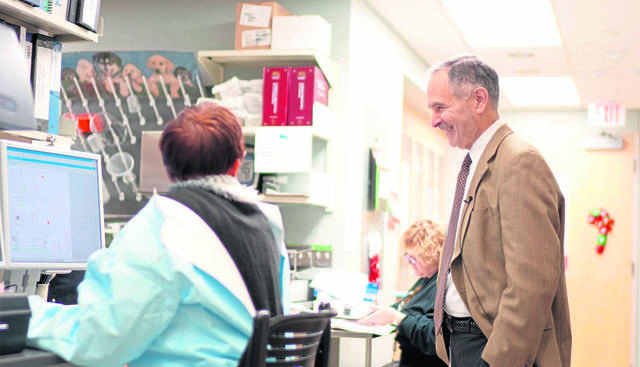Editorial: Pitt's part in HIV fight shows possibility
There was a time that living with HIV was an unimaginable idea.
HIV was the contagious virus that dragged you down the unavoidable road to AIDS, and AIDS killed you. It was a fact and there was nothing anyone could do about it.
Except they did.
Globally, HIV and AIDS are still big problems. In sub-Saharan Africa, 25% of the population is infected with HIV, but even there, UNAIDS data shows deaths dropped 42% in seven years because of increases in treatment.
And that happened with people in Pittsburgh. It happened because of researchers like the University of Pittsburgh’s Charles Rinaldo Jr. and doctors like David Lyter, whose Pitt Men’s Study was groundbreaking.
But doctors and scientists were not the only soldiers in this war.
HIV had to be studied where it was being seen, and doing that meant people had to step forward in a community where stepping forward was known to have consequences.
Gay bars in Downtown Pittsburgh and Oakland made it possible to find the people who would become the front lines of study. Gay men gave their stories and their blood to find answers to what was killing them and their friends. And in Pittsburgh, that happened but in other places, with other people, it did not.
People did small things to solve a big problem, and it worked. It didn’t seem like it could, but it did. The disease that was so broadly feared and seen as a kind of modern Black Plague three decades ago has not disappeared, but it is now a controllable thug rather than a serial killer. In 2016, it killed 16,000. Diabetes claimed about 80,000.
That is why we should recognize that solutions can have small starts, and answers can be found in our backyards.
If a contagious immune disease that killed millions can be beaten back with research, brainstorming, information and cooperation, that formula can be applied to anything. Economy, education, environment — and that’s just the E’s.
Too often, the response to a problem is a reference to the scope.
“That’s too big. That can’t be done.”
The Pitt Men’s Study was part of what proved that wrong.
Remove the ads from your TribLIVE reading experience but still support the journalists who create the content with TribLIVE Ad-Free.

